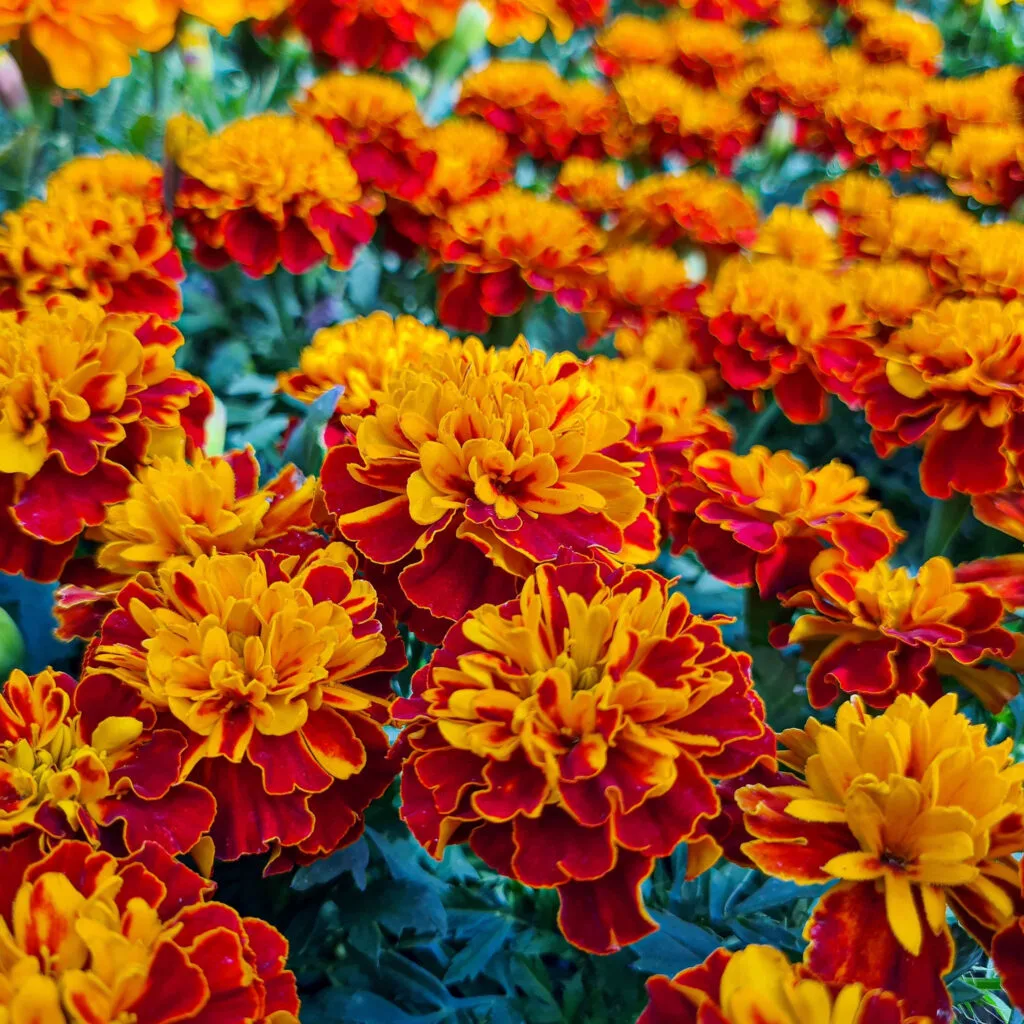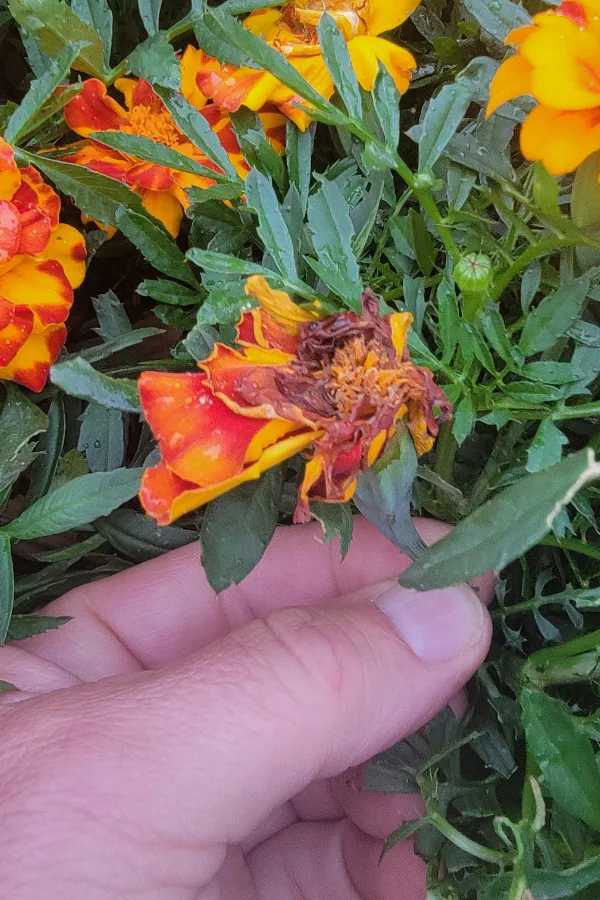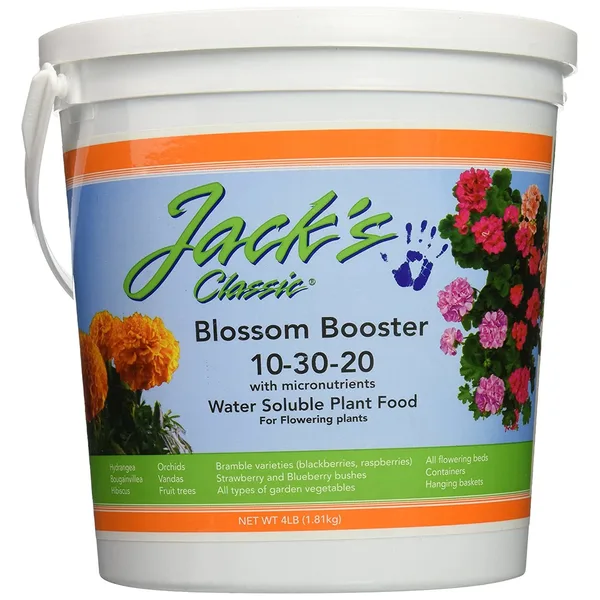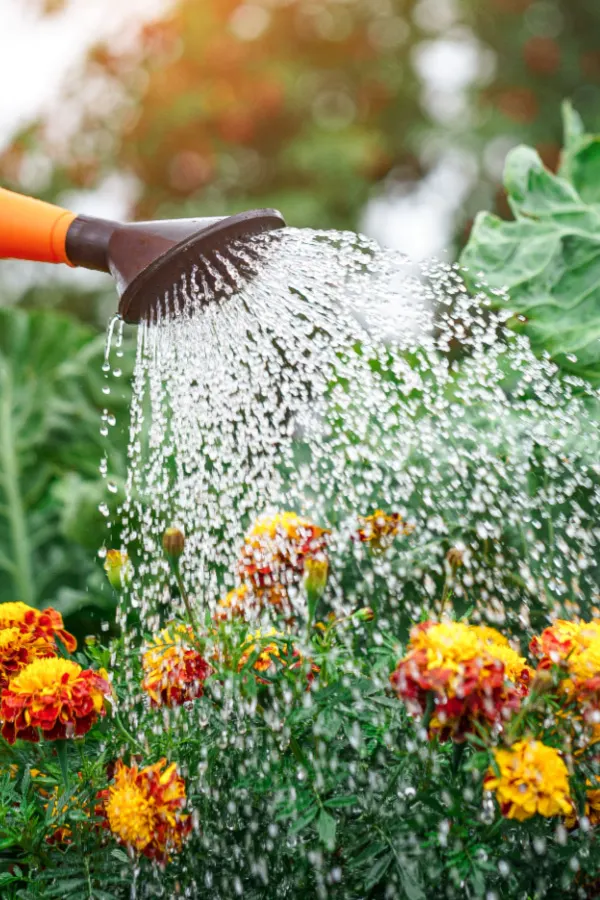Looking to keep your marigolds blooming big and bright all summer long – or maybe even getting them to bloom even bigger and better?
Marigolds are one of our absolute favorite annuals to grow all over the farm – and for a long list of reasons. Not only do these amazing annuals produce a huge volume of bright and colorful flowers, they are also one of the best flowers for handling the hot summer sun.
But for us, their intense beauty and durability are just the tip of the iceberg for why we love them to grow them everywhere. That’s because marigolds also happen to be an incredibly valuable asset when it comes to attracting beneficial pollinators – all while repelling a long list of harmful pests!

The vivid orange and yellow hues of a marigold plant are a major attraction to honeybees. In fact, it is one of their favorite plants of all to visit during the summer months. But marigolds also bring in wasps and butterflies as well, which are also highly important pollinators for flowers and vegetable gardens.
Marigolds and Pests – How To Keep Marigolds Blooming Big
But while marigolds help bring pollinators calling to your flowerbeds and vegetable garden – they are amazing at helping to keep other plants safe. When grown near vegetable plants such as tomatoes, peppers and cucumbers, they can help repel aphids, whiteflies and the dreaded tomato hornworm.
Tomato hornworms can decimate the foliage and fruit of a tomato plant. But when marigolds grow nearby, the oils and scent of their blooms are highly offensive to the moth that lays hornworm larva. Because of that, they usually steer clear of the space entirely, keeping your tomato plants safe in the process. (See: How To Stop Hornworms!)
If all of that protection wasn’t enough, marigolds also are an incredible weapon against mosquitoes too. Mosquitoes, just like the hornworm moth, simply detest the scent of marigolds. And when plants are in full bloom, they too tend to keep their distance from wherever they grow.
Listen In Below To Our Podcast On The Incredible Benefits Of Growing Marigolds!
It’s easy to see why we love marigolds so much. But even more, it’s also easy to see why keeping them blooming big and strong is so important to us. With that in mind, here are 3 simple secrets we have learned over the years that help keep our marigolds flowering like crazy – all summer long!
3 Simple Secrets To Keep Marigolds Blooming Big!
#1 Deadheading
Deadheading is at the top of the list when it comes to keeping marigolds blooming big.
As old blooms fade and die off, they not only look unsightly, they also continue to take valuable nutrients and resources from marigold plants. Even as the flowers die off, the plant continues to try to heal them by sending more power to them. And it will keep doing so until the old bloom completely falls off.
But by removing that bloom as soon as it starts to fade, you can stop that power loss immediately. And by doing so, the plant will then redirect its focus on solely producing and opening new blooms and flowers.
Here is the best part – with marigolds, deadheading is simple and easy! Simply pinch off the blooms behind the flower. When you do this the old flower and seed head will easily snap off the plant. You can certainly use scissors or small pruners if need be, but for us, using just our fingers is fast and efficient. To be honest, hearing that pop of the seed head coming off can be addictive!

For best results, try to deadhead your plants at least once a week. And remember, those old blooms are filled with seeds, so saving a few back and allowing them to dry out will give you free seeds to use next year.
One thing is for sure, the more you pinch back the old flowers on your marigold plants, the more you will be rewarded with more and more new blooms!
#2 Fertilizing For Blooms – How To Keep Marigolds Blooming Big
Giving your marigolds a consistent dose of power is also highly important when it comes to keeping them productive.
Producing new blooms and flowers requires a lot of energy from plants. Especially when the plants are continually trying to regrow new blooms all season long. And that is exactly why feeding your plants regularly is so important.
But how you power them and the type of fertilizer is important too. For starters, a steady, slower stream of power every ten to fourteen days is far better than large intermittent doses once a month.
Heavy applications of fertilizer given all at once can provide too much power too quickly to your marigolds. It will result in a mass of foliage growth but at the expense of blooms. For us, we like to feed our marigolds a liquid fertilizer mixed at half strength every ten days.
Liquid fertilizers are great for annuals because they absorb fast – both through the roots and foliage. This allows plants to keep a steady but manageable supply of nutrients to power blooms continually. Affiliate Product Link: Jacks Classic Blossom Booster Liquid Fertilizer

What you use to power your plants is also very important. Select a liquid fertilizer that has a higher balance of phosphorous and potassium than nitrogen. Nitrogen is important for greening up and growth, but the higher doses of phosphorous and potassium will power more blooms.
Worm Castings – An Extra Secret Weapon!
Finally, one final secret that we use on our marigolds is a monthly dose of worm castings on the surface of the soil. Worm castings are the ultimate slow release fertilizer. We sprinkle it around our plants every month. After we do, every time it rains or we water, the plants get a slow, steady stream of power.
We actually do this little trick with all of our annuals we grow in containers, hanging baskets and even in our flowerbeds. It honestly works wonders for plant health and blooms! Affiliate Product Link: Pure Worm Castings
#3 Watering – How To Keep Marigolds Blooming Big
Last but not least, when it comes to keeping marigolds blooming strong, proper watering is a must. Not just in giving your plants the right amount of moisture to thrive – but also in how you provide that moisture.
When watering marigolds, always try to water at the base of the plants and not directly over top of the blooms. Water sprayed on the blooms will shorten their life span. The moisture gets down into the petals and depending on the spray pressure, can damage them as well. Hard spray can also knock off delicate new blooms.

How Much Water Is Enough?
One thing is for sure, marigolds need moisture to power blooms and soak in nutrients through their roots and foliage. For maximum blooming marigolds growing in bed spaces should get at least an inch of water per week. Either by rain or by hand watering.
How much is an inch of rain? On average, a solid 30 to 60 minute shower twice a week is adequate. When watering by hand, a half gallon of water per plant twice a week is close to being equal to that amount.
For containers, pots and hanging baskets, daily watering is likely a necessity. But be careful not to overwater. The roots of marigold plants can be susceptible to rot when left to sit in water. Check the soil in containers by sticking the tip of your index finger down about an inch into the soil. If it is moist or wet, avoid watering. If it comes up dry, watering is in order.
Here is to keeping your marigolds blooming big and bright all summer long. And – to having more color than ever in your flowerbeds, containers and hanging baskets! Happy Gardening – Jim and Mary.
Jim and Mary Competti have been writing gardening, DIY and recipe articles and books for over 15 years from their 46 acre Ohio farm. The two are frequent speakers on all things gardening and love to travel in their spare time.
As always, feel free to email us at thefarm@owgarden.com with comments, questions, or to simply say hello! You can sign up for our free email list in the subscribe now box in the middle of this article. Follow us on Facebook here : OWG Facebook. This article may contain affiliate links.
